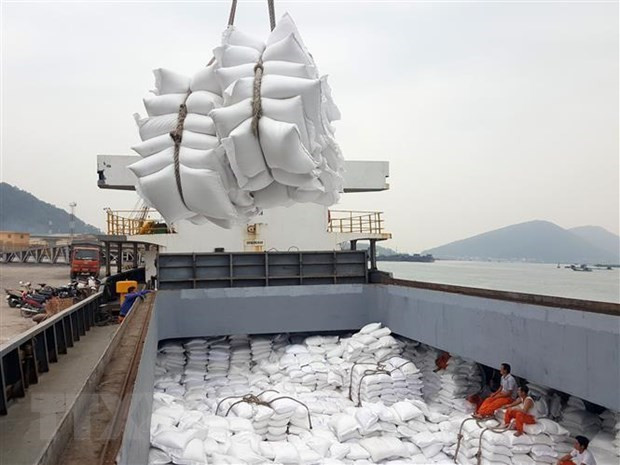The ministry would implement solutions on mechanisms and policies to removetechnical and trade barriers, internalise international commitments, customsprocedures, logistics and credit as well as building and developing brands tocreate a premise for rice export enterprises to exploit the markets, said TranQuoc Toan, deputy director of the Import and Export Department under theMinistry of Industry and Trade.
For rice exporters as well as farmers, Toan noted the need to be more proactivein improving the competitiveness of products through quality and price as wellas building and protecting trade to diversify markets towards sustainableexports.
The Ministry of Agriculture and Rural Development reported the volume of riceexported reached 450,000 tonnes with a value of 246 million USD last month.
The cumulative amount of rice exported in the first three months of this yearrose 1.1 million tonnes, while the value hit 606 million USD, down 30.4 percentin volume and 17.4 percent in value over the same period last year.
Nguyen Van Don, director of Viet Hung Co., Ltd in the Mekong Delta province of TienGiang, said that the reason for the decline in rice exports was partly as thefirst quarter of this year coincided with the Lunar New Year holiday.
In addition, the first two months of the year were between-crop periods whenthe rice supply was limited while the price was high, so it was difficult forbusinesses to negotiate export contracts.
Although the company's rice export volume declined by more than 30 percent overthe same period for the first three months of the year, the export rice pricerose by about 20 percent. The two largest import markets are still thePhilippines and China.
Meanwhile, Pham Thai Binh, general director of the Trung An High-Tech FarmingJSC in the Mekong Delta city of Can Tho, said that the first quarter’s riceexport dropped significantly in volume due to a shortage of empty containersand soaring freight rates.
“Customers still need to import, but enterprises cannot order containers topack their goods, the shortage of empty containers has pushed freight rates up600-700 percent, from 1,000 USD to 6,000-7,000 USD per container. With thisrate, not only rice exporters but also other firms are facing difficulties.This situation means the importer had to consider delaying the time ofreceiving the goods or looking for closer sources to reduce costs,” said Binh.
Commenting on this issue, Toan said that although the amount of rice exportedin the first quarter of this year declined compared to the same period lastyear, the price of rice for export grew due to high demand for food reservesaround the world, which has pushed up the general level of world rice prices.
Thai and Indian rice prices have also hit record highs in recent years.
Vietnam's rice price continued to remain at a high level of 547 USD per tonneby the end of the first quarter of this year, up 18.6 percent, equivalent to anincrease of 86 USD per ton compared to the same period last year. The currentprice of rice has been and is benefiting the rice farmers.
Vietnamese rice was being purchased by importers at high prices due to theimproved quality of Vietnamese rice, said Toan.
Vietnamese rice exporters were increasingly focusing on improving quality andtraceability to meet the strict standards of export markets such as the EU, theRoK, and the US, Toan said.
In addition, Vietnam has entered into many trade agreements with many strategiccountries and regions such as the Comprehensive and Progressive Agreement forTrans-Pacific Partnership (CPTPP), the EU-Vietnam Free Trade Agreement (EVFTA)and more recently the Regional Comprehensive Economic Partnership (RCEP) andthe UK-Vietnam Free Trade Agreement (UKVFTA)./.





























